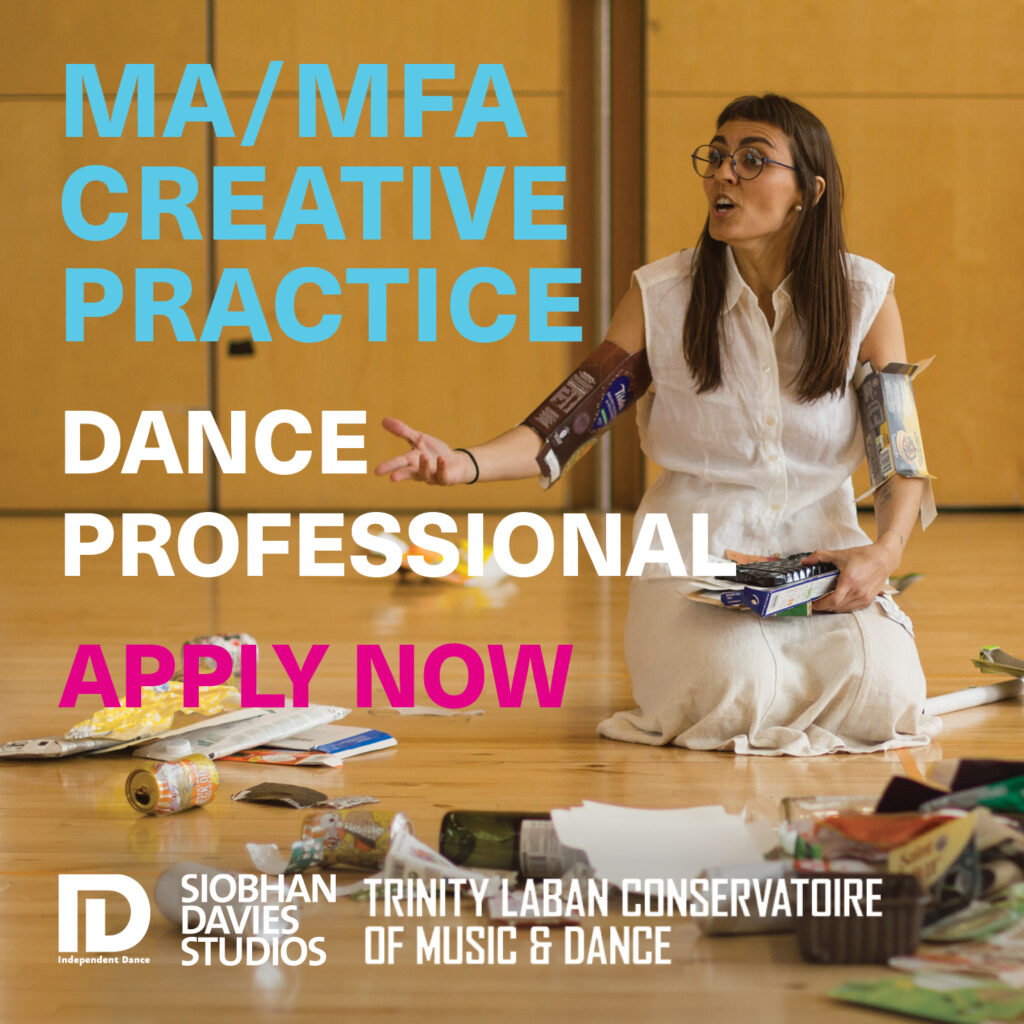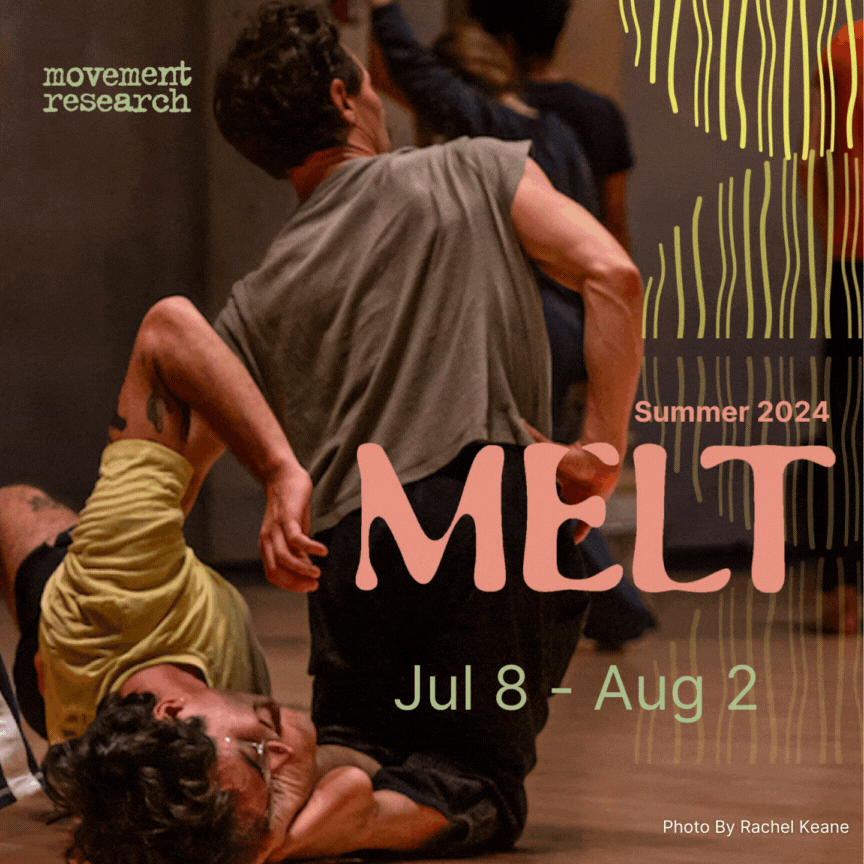CC guest editor Milka Djordjevich interviews choreographer Jonathan Burrows about his body of work in collaboration with composer Matteo Fargion. Their first trilogy of works Both Sitting Duet (2002), The Quiet Dance (2005), and Speaking Dance (2006) and the first two pieces of their most recent trilogy, Cheap Lecture (2009) and The Cow Piece (2009), will be presented at Danspace Project November 3-5, 2001 in collaboration with Janet Panetta, curator of International Dance Dialogues, and Performa 11.
Interview date: October 23 – 30, 2011 via email
Download this conversation as a pdf
Milka Djordjevich: How did you and Matteo Fargion start working together and how did the transition from Matteo composing music for you, to making collaborative works come about?
Jonathan Burrows: Matteo wrote a lot of music for dances I made, but in reality the work was already mixed up more than that, for instance Matteo choreographed the opening section of the film Hands from 1994. It was never a thing about music and dance for me, it’s just that I like how he thinks as an artist whatever he’s doing. Anyway, it got to a point in 2002 that I decided I didn’t want to work with these hierarchies of who was in charge, who commissioned who and so forth – more in a pragmatic way than philosophical, it just seemed to take up so much time and energy to negotiate. So I suggested to Matteo that we work from then on equally, sharing everything including administration. It made us nervous at first as somehow the old roles were comfortable, but we drew up a working agreement with a lawyer friend so that we didn’t take the new relationship for granted and that reassured us and got us started. In fact we’d forgotten we’d written this document until somebody asked me to write about collaboration and I found it stashed away in a file. It’s signed by us both, and says that in the event of a creative disagreement someone will help us and we’ll solve it, but in the event of a practical disagreement someone will help us and they’ll make the final decision. I always liked that detail, which seemed to recognise that an argument about money was different to an argument about the way you waved your hands.
Milka: When you are working together, do you find approaches to working in each other’s form that you can’t find in your own form?
Jonathan: I can’t speak for Matteo, but for me the idea of forcing the way dance works into musical concepts of structure has always been appealing. Of course you lose a lot and I wouldn’t for a minute recommend it as a useful strategy for everyone, but it suits me and there’s often something fruitful that arrives which you didn’t expect to arrive. For us this collision between dance form and musical structure is only part of a deeper shared interest in compositional practice. In fact through Matteo I met and studied with the composer Kevin Volans, who had also been his composition teacher. I didn’t study as a composer, instead Kevin and I decided that even though I was showing him dance we’d work as though we were doing the same thing and see what came out of that. It left me fascinated with acts of translation from one medium or idea to another, and it gave me a better understanding of what Matteo does, which underpins and strengthens all our decisions. There’s a fount of stuff we can draw upon without even having a conversation.
Milka: Do you have any attachment to the legacy/baggage that’s been produced from composer-choreographer relationships e.g. Louis Horst/Martha Graham, John Cage/Merce Cunningham, etc?
Jonathan: Cage and Cunningham are particularly important for us because we always both loved the work, as well as the meeting of ideas across mediums and the influence of Cage on Judson. But I think now we’re really more interested in what you might do and the effect that performance has upon it, rather than in the specific relationship between music and dancing. For us performance is the informal, uncontrollable thing which erases and alters the thing you thought you had made.
Milka: Do people ever expect the two of you to produce work that abides by a more traditional choreographer-composer relationship?
Jonathan: I don’t really know what a normal collaboration looks like, everyone seems to find their own way. We’ve discovered, for instance, that living in two different countries is as rich in possibilities as when we lived in the next street from each other. It turns out that having less chance to talk allows some ideas to come to fruition, which would have been squashed by mutual doubt if we’d been in the same room.
Milka: Having seen your work before, I know that the use of scores are a large part of your work. There is something particular about the familiarity of watching both of you read a score like musicians, but what you produce is very different and surprising. I witness you engaging with something that is like a secret language; You as creators/performers know the codes and rules, but we don’t. It’s not standardized like most music. We know what it produces, but not the source. This set-up, in a way, let’s us experience what you are producing as you are doing it, rather than showing us what you are producing. Can talk about this?
Jonathan: Well I always get worried by the thought that it seems there’s a secret language, as it’s important to us that the audience can read what’s happening. But I understand that there’s sometimes a gap between what you understand and what you can say about that thing that you understand. It is a quality of dance performance in all its forms, that it works on other levels than the literary. I think Matteo and I think of what we do as counterpoint, and that in some way it’s always a Bach keyboard piece, that he’s the right hand and I’m the left hand, and we hope that that shared act itself communicates and opens towards the audience – and includes the audience in some way, because it can’t exist without them. I don’t mean this just in the sense of a co-presence or witness, but in the way performance can only happen with permission from the audience, whose attention, inattention, concentration or laughter bends the tone of the event into a shape you couldn’t have anticipated. We have a principal for performing which is “How the audience sits is how we should sit,” so that our counterpoint picks up the physical feel of what’s in the room, same as you would when talking in a group. The friction we encourage between formal structure and informal performance is only a way to arrive at a state where each participant must be at the centre of what they do and at the same time give it all up to the person next to them. In a theoretical world this might sound idealistic, but our understanding is that this loss of self lies at the heart of many shared music and dance practices. The usual way to see performance is that you express yourself, but Matteo and I prefer to think of losing ourselves in a field of expression, and the invitation is that the audience member can lose themself too. The way we read scores in performance is connected to this idea of a conversation, hopefully in the way it invites you as an audience member to creep forwards, no longer nervous of the fear and madness in the performer’s eyes. But it started out as a solution to a problem – Both Sitting Duet was too complicated to remember and the students we showed it to said, “Just read the scores, it’s ok, don’t try so hard to perform to us.”
Milka: When you start making each piece, are you thinking about a larger idea that you are interested in accomplishing or are there a series of ideas or tasks you are working with? Can you talk a little about how you approach making a new work?
Jonathan: When we start making a piece it’s always about what we didn’t do that we wanted to do; what we didn’t feel we had permission to do. If the idea won’t go away then we interrogate it until we have to give up and accept what we thought we shouldn’t do, and then we find a place to begin and think about how to continue. But we’ve started quite a few things that we’ve thrown away, so it’s not an automatic process.
Milka: My experience with your work is that the form and composition of the work really shape the content of the work and produces something that isn’t heavy-handed. What are some of the compositional strategies the two of you use?
Jonathan: The issue of heaviness or lightness of tone in a performance is something I think about a lot. The nature of dance as a durational event is that as an audience member you’re usually trapped in the room with the thing that’s happening, and the ease or difficulty with which the time passes affects strongly the experience you have. Mostly dance is a participatory thing so watching it is particularly challenging, and this is perhaps where much of its power comes from when it works. But the sense that it can be difficult to watch has always made me want to resist too much heaviness. The strategies we use to try and do this come mostly from Kevin Volans, and are all about experiential perceptions of time in relation to how the thing is structured. I don’t think it’s that complicated, in fact most people I talk to who are making durational work are engaging with or resisting this kind of awareness in one way or another. And for Matteo and I there is another side to the question, which is that we decided, again as part of inviting a conversation, that laughter is allowed in performance in the same way it’s allowed in most human interactions. And it’s a tricky thing because it can easily be seen as not being art if it involves laughter. There’s a presence in serious subject matter or atmosphere which carries more weight. So we’re always trying to get the balance right between performances that we call “rock and roll” when the audience allows the thing off its leash, or performances which stick to the score in a stricter, more classical way. We veer between the two and both seem valuable. This is mostly the work we do, discussing how to negotiate this conundrum from show to show and city to city, with each different audience we meet. And I think this is a concern shared by other artists, particularly in the UK, like Tim Etchells and Forced Entertainment Company, or Lone Twin. It connects to a music hall history of irreverent humor which predates Dada or postmodernism.
Milka: I know that in many of your works musical scores are used to generate material. Are there ways in which you work which are generated directly from dance to create something other than dance?
Jonathan: It’s an interesting question, but the older I get the more I sense that the things I know or don’t know about dance are so ingrained that it’s only in rare moments I can see a connection between this physical knowledge and decisions made while creating a performance.
Milka: There is a freshness to each work I’ve seen. I’ve witnessed you laughing from what you produce: how the audience reacts and the mistakes you may make. I really appreciate the acknowledgement of what has happened, instead of ignoring it and pretending that you are not in the same room as the audience. What are your thoughts about this?
Jonathan: The thought we have is “How we feel is how we behave.” This means that if we feel self-conscious we are allowed to enter that feeling, or if we feel irritated we can be irritated. On the one hand it’s a way to deal with adrenaline, but it also sensitizes you to the room you’re in and to the other people there. All these ideas can go wrong though. You’re always aware of that big question, “Am I doing too much?” And maybe sometimes you are, and at the same time you know that the answer is not to do too little.
Milka: You call Both Sitting Duet (2002), The Quiet Dance (2005), and Speaking Dance (2006) a trilogy. How do you consider it a trilogy? And how are the first two pieces, Cheap Lecture (2009) and The Cow Piece (2009), of the second trilogy different?
Jonathan: Matteo always spoke of the first three pieces as the three movements of a classical piece of music, with a slower middle and a rousing end. In a way it was just a bit of marketing, and the more pieces we make and the more we perform them in various combinations, the more we see them as one continuing body of work. The only rule seems to be that on any given night it works better if we perform whichever pieces we perform in the order that we made them. There is a kind of accumulative narrative which we should honor, however much we might question it. And this idea of an ongoing event is what makes it interesting to continue. What else might it be possible to say or do?






